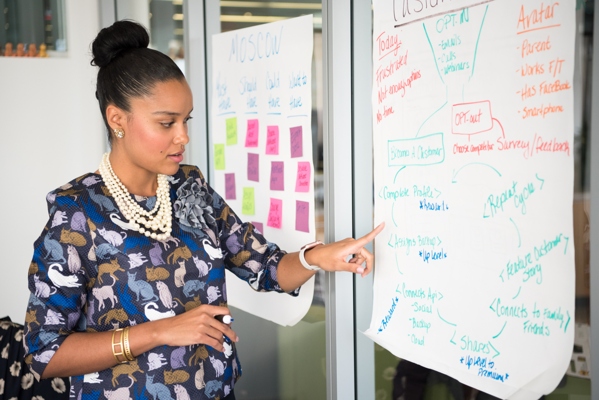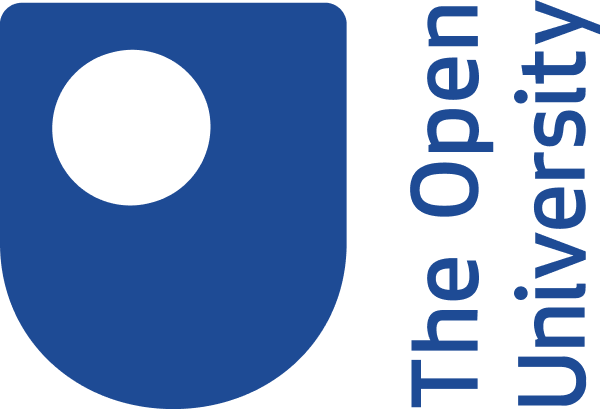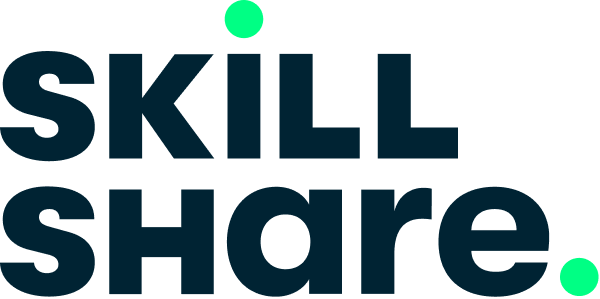Kurse zur Verbesserung der Business Management-Fähigkeiten
62 Kurse
Dream it, Do it: Breaking Into The Music Industry
Breaking into the music industry is the dream you share with pretty much everyone else on the planet. And there is a whole infrastructure designed to keep you out. But you don’t have to obey the gatekeepers. Steve Rennie is here to show you how to carve your own path to success.With over 30 years in the music business as a concert promoter and former manager of platinum-selling rock band Incubus, Steve draws on his experience to coach and mentor the next generation of artists and music pros. In Dream it, Do it: Breaking Into The Music Industry, Steve is going let you in on what it takes to get your foot in the door and where to go from there. You’ll learn how to find a way over, around, or through anybody, or anything standing in your way. You’ll get straight-shooter insight on what separates winners from losers to how to strike when the iron is hot.Talent is common, but having what it takes to make it in the music biz is an entirely different set of skills. Steve is here to teach them to you.

How to Plan and Create Better Quality Content on YouTube
The video focuses on the key aspects of creating better quality content on YouTube. It starts by emphasizing the importance of having an appropriate length video, rather than just focusing on the length itself. The speaker then delves into the topic of how longer videos can provide more context and depth, while shorter videos may lack detail. Additionally, the video touches upon the idea that chances are people will watch a longer video longer, which can increase minutes watched. Finally, the speaker mentions that it's not just about the length of the video, but also the content within it, and how it should be concise yet informative.

European Business Law: Doing Business in Europe
Class Central Tips This six-week course titled Doing Business in Europe is the second in a series of three exploring some of the main business aspects of European Union law. Besides providing learners with a sound knowledge base of European laws and regulations relevant to establishing and managing a company within the European Union, the course also explores business considerations within a broader perspective by including inputs from leading law practitioners in the field. More specifically, the course discusses strategic and financial considerations within Company law, as well as Labour law issues such as restructuring enterprises, working conditions and handling crises situations. The course also examines other legal areas such as Tax law, Environmental law and Private International law, and how they tie in to doing business in Europe. At the end of this course, you will have a basic understanding of how to: · Understand the relevant regulations governing the internal European Union market · Establish and run a company within the European Union · Employ staff and recognize workers’ rights and obligations · Comply with tax regulations and environmental standards · Set up agreements and resolve cross-border disputes · Successfully analyse EU case law and draft case reports About the Series The Lund series in European Business Law ranges from considering the basic structures and principles of the European Union to focusing on specialized areas of European Union law. The first course, Understanding the Fundamentals, examines the core structures and principles of the European Union. The third and final course, Competing in Europe, goes into depth concerning how to compete on the internal market and protect your brand, product or invention. All three courses can be taken independently or in sequence depending on your needs and preferences. To keep up to speed on the course series, visit our Facebook page at: https://www.facebook.com/eblmooc/ Syllabus and Format Each course consists of a number of modules where one module represents about one week of work. A module includes a number of lectures and readings, and finishes with an assessment – a quiz or a peer graded assignment. The assessments are intended to encourage learning and ensure that you understand the material of the course. Participating in forum discussions is voluntary. Course I - Understanding the Fundamentals Module 1. Introduction Module 2. Legal Method and Sources Module 3. Constitutional Freedoms and Fundamental principles Module 4. Enforcement of EU Law and Judicial Review Module 4. Freedom of Movement Module 5. The External Dimension Course II - Doing Business in Europe Module 1. Making Business Transactions Module 2. Establishing a Company Module 3. Employing and Working in Europe Module 4. Paying Taxes and Complying with Environmental Standards Module 5. Resolving Cross-border Disputes Module 6. Case Clinic Course III - Competing in Europe Module 1. Trademarks as essential Assets Module 2. Defending Patents Module 3. Competition: Illegal Agreements Module 4. Competition: Abuse of Dominance and Mergers Module 5. Selling to the State and State Aid Module 6. Legal Writing and Argumentation Lund University Lund University was founded in 1666 and has for a number of years been ranked among the world’s top 100 universities. The University has 47 700 students and 7 500 staff based in Lund, Sweden. Lund University unites tradition with a modern, dynamic, and highly international profile. With eight different faculties and numerous research centers and specialized institutes, Lund is the strongest research university in Sweden and one of Scandinavia's largest institutions for education and research. The university annually attracts a large number of international students and offers a wide range of courses and programmes taught in English. The Faculty of Law is one of Lund University’s four original faculties, dating back to 1666. It is a modern faculty with an international profile, welcoming both international and Swedish students. Education, research and interaction with the surrounding community are the main focus of the Faculty’s work. The connection between the three is particularly apparent in the programmes and courses offered by the university, including the university’s MOOC course in European Business Law. The students get the chance to engross themselves in traditional legal studies, while interacting with both researchers and professionally active lawyers with qualifications and experience from various areas of law. The faculty offers three international Masters: two 2-year Master’s programmes in International Human Rights Law and European Business Law, and a 1-year Master’s in European and International Tax Law. Students from around 40 countries take part in the programmes which offer a unique subject specialization within each field, with highly qualified researchers and professional legal practitioners engaged in the teaching. The Master’s programme in European Business Law provides an in-depth understanding of both the practical and the theoretical aspects of business law within the European Union. The programme provides both general and specific knowledge of the European Union legal framework, which is necessary for students intending to work as legal advisors or business decision-makers. The programme is delivered in English and is open to students with at least a three year degree in Law (Bachelor, LL.B, or equivalent) who want to specialise in European economic and business law. The MOOC course in European Business Law is a great course to start with for students intending to apply for the Master’s programme in European Business Law. Even though the MOOC course does not grant credits previous knowledge of the subject is considered upon admission to the master’s programme. For more information about the Master’s programme in European Business Law see https://www.law.lu.se/#!meb

"Characteristics & Forms of Business Organization" - BOM Subject Introduction
In the video 'Characteristics & Forms of Business Organization', we will delve into the world of business and explore the various forms of organizations. Starting with an introduction to the must-know subject for all commerce and management students, we will discuss how business has developed and evolved over time. We will then dive into the different types of businesses, their advantages, and disadvantages. The video will cover the main features of any business or enterprise, including exchange of goods or services, barter system, and more. By the end of the video, viewers will have a comprehensive understanding of the characteristics and forms of business organizations.

Introduction to AWS Marketplace
This course is an introduction to AWS Marketplace – the online store that helps you discover, purchase, migrate and immediately start using the software and services you need to build products and run your businesses.This course is an introduction to AWS Marketplace – the online store that helps you discover, purchase, migrate and immediately start using the software and services you need to build products and run your businesses. Throughout this course, we will cover how AWS Marketplace works, as well as the benefits to using the service. An overview of some use cases for AWS Marketplace will also be provided.

The Concept of Entrepreneurship
The video begins by introducing the concept of entrepreneurship and its importance in today's society. We then delve into the different types of entrepreneurship, including traditional and modern entrepreneurship, and explore why entrepreneurship is chosen. The characteristics of entrepreneurs are also discussed, along with examples of successful entrepreneurs and their entrepreneurial process. Additionally, we examine the challenges that entrepreneurs face and why entrepreneurship can fail. Throughout the video, we provide insights into the industry life cycle and new trends in entrepreneurship, as well as the sources of business ideas and why they are important. By the end of the video, viewers will have a comprehensive understanding of the concept of entrepreneurship and its relevance in today's world.

A complete guide to launching a product on Amazon in 2020
Use the newest data driven techniques to find and launch a private label product on Amazon What you'll learn: Product researchNiche hunting & validationHow to differentiate yourself from the competitionStreamlining keyword researchHow to optimize your listing to create max traffic & salesHow to list your productBusiness ManagementScaling your business How do I even begin selling on Amazon?How do I grow my current product and create organic traffic to my listing? What shouldIknow about the Amazon space going into 2020? These are all questions that will be answered in this course. Whether you are interested in selling, already started your product research, or have a successful product - Jon and Darren will make sure you fully understand all of the nuances for each step of the process. They will be deep diving and giving live examples of specific products and niches so you get an all encompassing view. If you are looking to create a passive income for yourself, then this course is definitely for you!

Transforming a trillion dollar industry
Adi Ta Taco shares the story of how she and her husband Alon Cohen tried to remodel their San Francisco home but found the process maddening and broken. They then built a system that not only solved their problem but eventually grew into a business that connects 2.4 million architects and remodeling professionals, as well as homeowners and dreamers, through a unique blend of demand aggregator and business process tool. The company has grown to include 40 million monthly unique users and has disrupted the $1.2 trillion home renovation industry. Adi discusses how her company is defining entrepreneurship by building something entirely new where nothing existed before, and how the platform has become a true definition of entrepreneurship.

Double focus: IPO's & the future of games
The video focuses on the educational content related to the mobile gaming industry. The speaker discusses how Robia has evolved over time and adapted to changes in the market, including the introduction of new games and branded iterations of existing ones. They highlight the importance of renewing oneself frequently and having a strong brand recognition to stay competitive. Additionally, the speaker expresses a desire for better discoverability in app stores and suggests that maintaining good relationships with these platforms is crucial. The video also touches on potential changes that Apple or Google could make to improve visibility in their stores.

Getting Started with QuickBooks Company Files
In this video, we will cover the basics of QuickBooks file management. We will start by explaining the different types of QuickBooks files and how to get started with a new company file. We will then dive into the steps for opening two QuickBooks files at the same time and how to save your files in the correct location. Additionally, we will discuss technical considerations such as program file save locations and how to avoid issues when restoring backup copies of your files. By the end of this video, you will have a better understanding of how to manage your QuickBooks company files effectively.

Sustainable Food Production Through Livestock Health Management
Class Central Tips Learn about the impact of infectious disease on sustainable animal-based food production by understanding the science of growth, immunity, and infection and by learning the problem-solving skills needed to advance animal health and food production through optimal management practices. There is a growing global need in agricultural production for a workforce that is capable of integrating knowledge of animal health and production with an understanding of consumer preferences in the context of economic reality, business efficiency, and ethical constraint. However, current evidence suggests that there is a growing shortage of people with the knowledge and problem-solving skills required to match the rapid advances being made in animal health, science, and food production. The results of this shortage are wide-ranging and could lead to challenges in food security and agricultural economic competitiveness in some countries. In this course we will explore the effect of infectious disease on sustainable animal-based food production. The content and learning outcomes of this new course will be designed to be relevant across different food production sectors (i.e., beef, dairy, poultry, and pigs). While the instructors will provide the participants with a strong scientific base for understanding the impact of infectious disease in animal-based food production, the emphasis of the material will be on practical problem-solving and will be directed towards equipping participants with a platform for developing the skills needed to contribute to sustainable food production.

t30L Business Workshop Keirsten Williams
In this video, Kirsten Williams shares her expertise on cybersecurity compliance and policy development. She discusses the importance of developing and managing security programs, and how she is responsible for ensuring all aspects of information security and governance are in place at the retailer she works for. Williams highlights the changes to the CISSP exam that took effect in April 2023, including the addition of simulation-based questions and longer-winded questions. She also provides tips on how to pass the exam, emphasizing the need for thorough preparation. Additionally, Williams discusses her certifications and educational background, highlighting her passion for cybersecurity and her commitment to staying up-to-date with the latest industry developments.

How Orville Redenbacher Became a Popcorn Pimp
Popcorn has been a part of human culture for thousands of years, with evidence of its cultivation dating back to 4,700 BC in Peru. The people of the Americas have been eating unique varieties of popcorn for centuries, with entire cubs being popped in various ways. Some cultures had spiritual beliefs about the sound of kernels popping, while others used it for ceremonial purposes. In the 20th century, Orville Redenbacher became a pioneer in the field, developing new strains of popcorn that were easier to grow and produced more consistent results. His work transformed the industry and made popcorn a staple snack food around the world. Today, popcorn is enjoyed in many forms, from movie theaters to home kitchens, and its history is a fascinating tale of human ingenuity and cultural exchange.

Hip-Hop Artists Are the Original Entrepreneurs
The video begins by discussing how hip-hop artists have always been entrepreneurs, from the early days of the genre. The speaker highlights examples such as Jay-Z and Puff Daddy who have successfully transitioned into legitimate businessmen. The discussion then shifts to new breeds of networked entrepreneurial hip-hop artists like DJ Khaled and Chance the Rapper, who are using social media in innovative ways to reach their fans. Ryan Leslie, a producer and singer, is also mentioned as someone who has pioneered ideas about going it alone and creating his own marketing and distribution strategies. The speaker notes that these artists are resisting the traditional label structure and instead are taking control of their own artistry and business. The discussion concludes by highlighting the exciting possibilities for creativity and entrepreneurship in the hip-hop industry.

Writing an Academic Essay: Learning English for Academic Purposes
Improve your academic essay writing skills in English. On this online course, you will learn useful reading and note-making strategies, then find out how to make effective and appropriate use of information and ideas from your readings in your essays. You will gain vocabulary learning skills and learn how to structure sentences, paragraphs and essays. In the final weeks, you will use these skills to submit an academic essay and receive detailed Educator feedback. Throughout, you will read academic texts and learn vocabulary related to business and management, focusing on teamwork, leadership, organisational culture, marketing and globalisation. This course is designed for students who want to study in English at university. We recommend an existing English language level of IELTS 5.5.

PRINCE2® Foundation Certification l PRINCE2® Specialist l PRINCE2® Guide l Global Edulink
The video is an introduction to the PRINCE2® certification program, which includes an e-learning package based on the PRINCE2® manual. The video covers the basics of Prince II, including the four key elements and how to tailor a course flow. It also provides an overview of the exam questions and modules in the e-learning package. Topics covered include: managing successful projects, important key messages, definitions, and minimum requirements. The video concludes with an overview of how to use Prince II, what it's good for, and an introduction to the four key elements and tailoring a course flow.

How to Decorate your Living Space | Developing Your Style with Jonathan Adler
In this video, Jonathan Adler discusses the importance of creating a personal brand and developing a unique design style. He explains that branding is not just for businesses but can also apply to individuals looking to establish their identity in the world of interior design. Jonathan shares his insights on how to create a brand and how it can help you move your goals forward. He emphasizes the need to be honest about who you are and who you want to be, and how having a personal brand can help you become your best self. The video covers topics such as creating an identity, steering design in the right direction, and the wide reach of branding in concept. By the end of the video, viewers will have a better understanding of how to establish their own personal brand and develop their unique style.

"Introduction To Business Economics" By Dr.Devika Bhatnagar
In this video, Dr. Devika Bhatnagar covers the essential topics of economics, including what economics is, why it's important, and how it relates to non-commerce students. She discusses how economics studies how people allocate resources to produce goods and services, and how they make decisions based on maximizing yields. The video also touches upon the limited resources and unlimited rewards concept, highlighting the importance of understanding economics for any individual or business. Dr. Bhatnagar emphasizes that economics is a base subject and essential for everyone to understand, regardless of their field of study.

This Startup Life: 3 Years Deep - Ben Cull - NDC Oslo 2020
Ben Cole's presentation focuses on two key spoilers for running a successful startup: understanding that everyone's journey is unique, and building strong relationships with customers, colleagues, partners, and investors. He emphasizes the importance of applying these lessons to one's own situation and circumstances, rather than simply copying others. The presentation also covers Ben's background in web development and his love for beer. Throughout the talk, Ben is energetic and passionate about entrepreneurship, making it an engaging and informative watch.

Get Started with Facebook Business Manager
By the end of this project, learners will know how to get started with Facebook Business Manager. According to Facebook, “Business Manager allows advertisers to manage their marketing efforts in one place and share access to assets across their team, partner agencies and vendors.” By the end of this project you will know how to create a Facebook page, a Facebook Business page, and understand how to effectively manage your Facebook Business page using Facebook Business Manager. Note: This course works best for learners who are based in the North America region. We’re currently working on providing the same experience in other regions.

Agriculture and the World We Live In
You will learn about the world’s population and the crucial role of agriculture in feeding the steadily increasing number of people. You will then see how climate and soils dictate the types of farms we see in different regions and countries.You will then “drill down” and look at individual farms around the world. We will talk about how the farmers manage these farms, and why they do what they do. We will finish off with a look at the exciting new technologies that are transforming agriculture and the sustainability issues that farmers are dealing with in the 21st century. What will I learn? The size of the world’s population and how quickly it is growing Whether more people live in cities than in rural areas and why this is important The quantities and types of food we produce around the world How food production is becoming globalised and the implications of this for farmers and consumers How climate, soils and fertilisers affect the way we farm The crucial role of soil biology in our farming systems How different cropping farms operate and the role of crop rotations The big differences between pasture based and feedlot systems of animal production Some of the issues associated with the intensive production of animals such as pigs and poultry The arguments for and against organic farming and the use of genetically modified plants and animals in agriculture. The vast array of businesses that are associated with agriculture The new information technologies that are transforming the way we farm How agriculture can have adverse effects on the environment The challenges that might be posed by global climate change Where could this lead me? If you're wondering what your future could look like in this area, here are some potential careers you could head towards. Agricultural consultant Farmer Rural banker Stock and station agent

The Beginner's Guide to Systematic Freelancing
What will you learn in this class? Everything I’ve learned from 10+ years of freelancing to help you get started and grow. How to figure out what services you can offer How to make money AND do what you love How to find people who are WILLING to hire you How to sell your services without having to become some sales genius or slime ball How to build your freelance business as a sustainable business you can sell or hand to your kids and grandkids And, ultimately, be YOUR OWN boss and control YOUR OWN destiny. Who is the instructor? The course is taught by me, John Morris. I've been a freelance web developer for over 14 years. I have 11 other courses here on SkillShare. I've taught thousands of students. I have a YouTube channel of nearly 60,000 subscribers and growing. I, also am an Army veteran that trained solders deploying overseas. Teaching is what I love to do and my goal is to help you become a highly skilled, well-respected and well-paid freelancer. I believe this class help you put together concepts and teach you skills that will help you do all that faster. So, if you're ready to get rolling, enroll in the course and I will see you on the inside.

How to Create a Facebook Business Manager Account
By the end of this project, learners will have an understanding about all the features in Facebook Business Manager. Also, using a hands-on approach, learners will create a Facebook Business Manager account. Facebook Manager is a central hub for managing numerous aspects of a business with a Facebook presence. According to Facebook, “Business Manager allows advertisers to manage their marketing efforts in one place and share access to assets across their team, partner agencies and vendors.” Note: This course works best for learners who are based in the North America region. We’re currently working on providing the same experience in other regions.

How to Start a Machine Embroidery Business
Have you ever dreamed of turning your passion into a profession? Find out how easy it can be when you join owner of Sew Creative Embroidery, Marie Zinno, and learn how to start your embroidery business. During class, you’ll get comfortable with the day-to-day of running shop as Marie shows you how to think in the business mindset. Together, you’ll cover the pros and cons of working from home, and Marie will share advice for decisions you’ll have to make along the way – such as picking a business name. Learn what you need to know to choose between a single or multi-needle machine, manage inventory effectively and set prices to turn a profit. Plus, get tips for hooping best-sellers, and learn Marie’s easy methods for promoting your business, whether youre partnering with local shops or making a buzz on social media!

Marketing Design with Easil
Easil is a free, user-friendly platform which allows you to create informative and eye catching designs to market your products, events, or services. Known for their “drag-and-drop” features, Easil gives you the ability to truly customize each of your ads to meet your marketing needs. Easil has a library of free templates available to use, which makes creating ads and marketing campaigns a breeze. With social media’s heavy influence and presence in today’s society, it is important to create a strong social media presence when advertising your company. This will help to ensure target market engagement and keep your customers up to date on your current sales, projects, and events. In this project, we will use Easil to create social media posts to help boost online presence and increase customer interaction. In addition, we will design a customer loyalty punch card which our customers can use to keep track of their purchases and rewards. This project will teach you about some of the many features of Easil while also giving you the freedom to explore your own creativity. Note: This course works best for learners who are based in the North America region. We’re currently working on providing the same experience in other regions.

Music Business Foundations
Class Central Tips This course has been developed to provide students with the latest instruction on the best way for creators, consumers, and facilitators to navigate the resurgence of one of the world’s most exciting industries: the music business. Three things are clear about today’s music industry: The consumption of music is expanding at the greatest rate in history and from the most portals ever imagined, the cost of producing music is decreasing, and the number of artists creating and seeking to expose their work and develop careers through the Internet has increased dramatically. Whether you’re a music creator, consumer, or facilitator of this process, you’ll want to understand the history, underpinnings, and basics of the music business. Course author John Kellogg—administrator, educator, entertainment lawyer, performer, and radio and television personality—offers students the opportunity to learn the fundamental principles of the developing new music business, for now and into the future. What you'll learn: -- The basic history of the music industry and today's business trends -- How recording agreements are formulated -- The basics of copyright law as it pertains to the music business -- The role of agents, managers, attorneys, and specific business entities

Secondary : Home Science (216)
Home science subject consists of fivespecialisations,(1) Food and nutrition(2) Human Development(3) Family Resource Management(4) Textile and Apparel Science.(5) Extension and Communication.Fivespecialisationsintegrate the life skills which equip the learner to face the challenges of life in changing scenario of eating habit, health, fashion, child care, family dynamics, market, media, mobile apps, entrepreneurship, laws & regulations etc. The learner finds his or her path to walk upon in future.Sky is limit for Home Science learners. The learner gains the knowledge, skills and abilities in each field of specializations. The learner with creative bend of mind may find career in planning and cooking healthy meals, fabric weaving and printing, work for play school, making utility articles. The learners are made sensitive towards their food habits, cooking practices and health of the all family members, care and selection of clothes, environment, safety, cleanliness, hygiene & sanitation in houses, role of ethics, values and positive attitude in people as well as consumer rights and responsibilities in the marketLearners develop managerial skills through time, energy and money & resource management. Home Science equips the learner in all aspects of life.

How to Teach It
Whether you’re a quilter looking to build your stash with a little extra cash or an established professional crafter hoping to teach at international conventions, this class will help polish your pedagogical approach. You’ll learn how to develop a craft class with your particular audience in mind, establish your class rates and fees, choose a class project and communicate clearly with your students. Gwen, a Craft Yarn Council Certified Teacher, also offers valuable tips and techniques on how to market your class and build solid business relationships with craft stores. Her passion for instruction will help guide you through the practical considerations of becoming an instructor on the local, regional and national levels. She also offers advice to retail craft shops wanting to attract more customers by offering in-store crafting classes.

The Complete Guide To Activating High Performance
Learn from the experts & maximize your performance through exercise, nutrition, sleep, mindfulness, and happiness What you'll learn: Learn cutting-edge science and bio-hacking strategies to provide you with the exact plan to take you to the next level, including a nutrient dense meal plan and full body exercise plan.Master brain boosting exercises to instantly reduce your body's overall stress load, give you more clarity, upgrade your memory, improve your focus, and see better results in every area of your life.Gain real world tools to recharge your life with a plan to help you lose weight, feel great, find more fulfillment in life and decrease your chances of illness or disease.Define a crystal clear future vision for your life and experience deeper meaning and purpose in all that you do while increasing your overall happiness. This course begins with transformational tools to design your ideal life and map out milestones to take you from where you are now to where you want to be.As you gain access to the tools that will upgrade your performance on every level, you will realize this program provides you with the opportunity to create the life, career, or business you have always envisioned.You’ll learn from an international all-star lineup of high performing experts including: Decorated Performance Coach and Best-Selling Author of LIVE IT!, Jairek RobbinsAward-Winning Personal Trainer and host of the Ben Greenfield Fitness Podcast, Ben GreenfieldFamed nutritionist and host of The Model Health Show Podcast, Shawn StevensonHolder of 26 world records including longest ice bath and often referred to as “The Iceman,”Wim Hof.They’ll walk you through the exact research-backed tools they’ve shared with over 2.5 million people around the world to achieve unbeatable results. Whether you want to make more money, lose weight, increase your energy, improve your mental clarity or experience more happiness, it’s all in this course. Each short lecture provides intriguing action-based content to revamp your life. You’ll benefit greatly by eliminating energy draining, stress inducing, illness provoking habits and replacing them with the high performance habits taught in this course to help you achieve even your loftiest goals with confidence.Throughout the course, you'll have the opportunity to complete exercises that will help you forge a path you can easily follow, including breathing exercises, workout plans, meal plans, and high performance “hacks” as you continue to build momentum. By the end, you’ll have a complete high performance action plan and a 30 day challenge that puts it all together so you can pave your way towards a rewarding career, healthy body and fulfilling life. You'll absolutely get as much out of this course as you choose to put into it.The most rewarding part of this course will be the leveling up of your mental and physical strength as well as exploring the deep sense of meaning, purpose, and happiness you’ll experience throughout it. Whether you’re an entrepreneur, employee, student or parent, you’ll learn how to become a high performer in every major area of life. Let’s get started!

The value of coffee
This course explores the value of coffee by investigating its relationship with money, debt, and different cultures of consumption. By the end of the course, learners will be able to understand the economic significance of coffee, compare various cultural practices related to coffee consumption, and assess their own knowledge through a Coffee Quiz. The teaching method includes interactive quizzes, readings, and discussions. This course is designed for individuals interested in economics, cultural studies, or the coffee industry.












